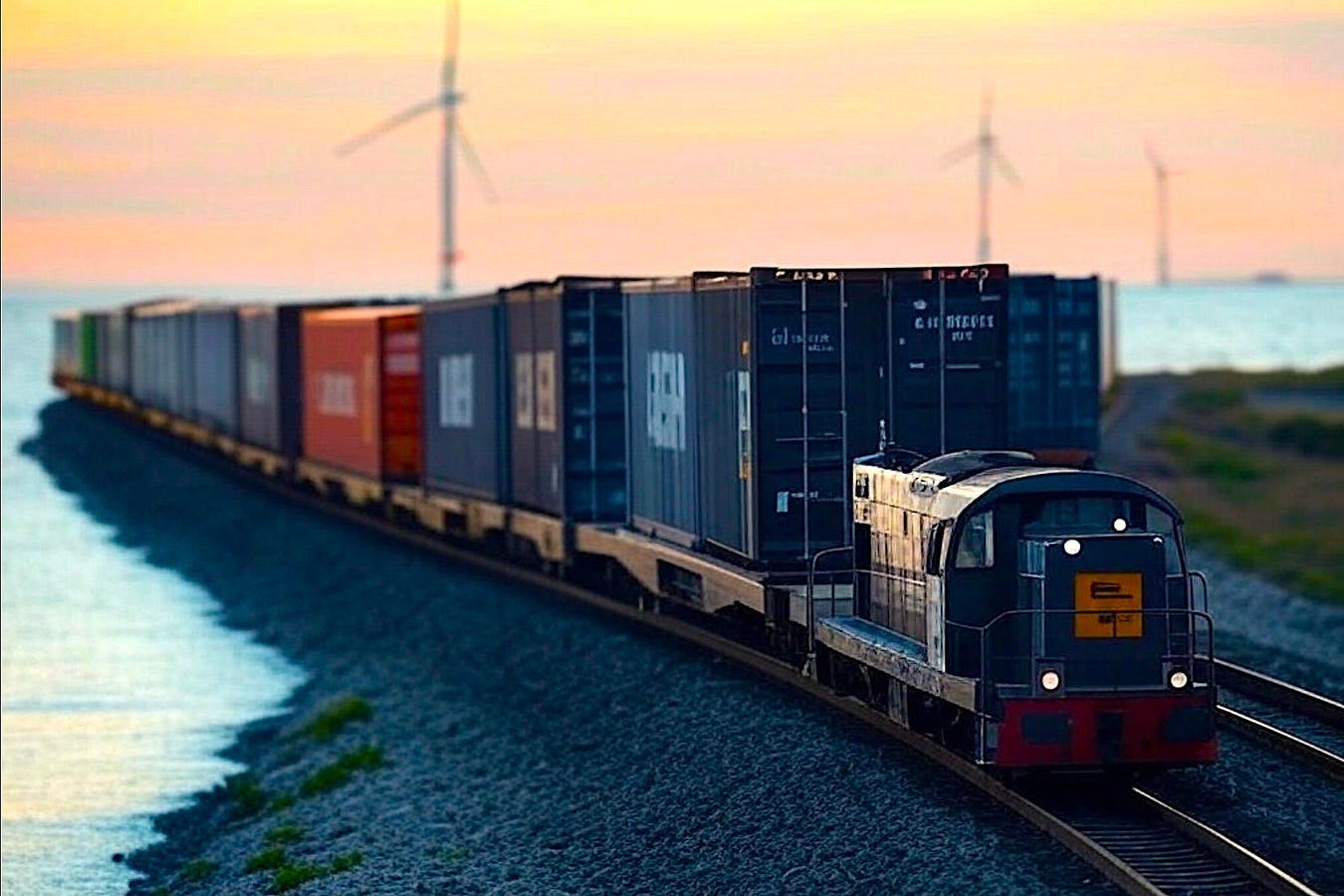“The Gravy Train Hauling Away Cash from Offshore Wind Development on Our Dime Is Over!”, Guest Post from Robert L. Bradley, Jr. at Master Resource.
“The terrible economics of offshore wind, and the growing pressure on electricity rates from prior wind and solar duplication, will not be reversed anytime soon.”
The Gravy Train Hauling Away Cash from Offshore Wind Development on Our Dime Is Over!
JAN 16
Guest Post from Robert L. Bradley, Jr. at Master Resource.
It should simply be worded “The Offshore Wind Rescue Act.” Instead, the Reinvesting in Shoreline Economies and Ecosystems Act (S. 373: 118th Congress) reads:
To modify the disposition of certain outer Continental Shelf revenues and to open Federal financial sharing to heighten opportunities for renewable energy, and for other purposes.
A BILL
To modify the disposition of certain outer Continental Shelf revenues and to open Federal financial sharing to heighten opportunities for renewable energy, and for other purposes.
Be it enacted by the Senate and House of Representatives of the United States of America in Congress assembled,SECTION 1. SHORT TITLE.
This Act may be cited as the ‘‘Reinvesting In Shoreline Economies and Ecosystems Act of 2023’’ or the ‘‘RISEE Act of 2023.’”
The bill is summarized as follows:
This bill increases revenue streams provided to states from offshore wind projects, offshore oil and gas leases, and onshore energy and mineral resources. States must use the revenue for specified purposes, such as coastal restoration, conservation, or infrastructure.
Specifically, the bill requires revenues generated from offshore wind projects carried out under a lease entered into on or after January 1, 2022, to be deposited into accounts for the U.S. Treasury, the National Oceans and Coastal Security Fund, and adjacent coastal states. Currently, this revenue is deposited in the U.S. Treasury. The Department of the Interior must disburse the revenue to a state in an amount that is based on a formula that is inversely proportional to a state’s distance from the offshore wind site.
In addition, the bill removes the cap on the amount of revenue generated from offshore oil and gas leases that may be shared with states under the Gulf of Mexico Energy Security Act of 2006.
It also eliminates a fee under the Mineral Leasing Act that Interior currently collects to administer the onshore revenue sharing program.
Comment
The gravy train is over. This languishing bill, supported by the political side of the Climate Industrial Complex, first introduced on February 9, 2023, will die in the Committee on Energy and Natural Resources. The terrible economics of offshore wind, and the growing pressure on electricity rates from prior wind and solar duplication, will not be reversed anytime soon.
So, what has become of the Biden-Harris Administration's goal of constructing 30,000 MW (30 GW) of offshore wind by 2030? The current operating projects are:
Coastal Virginia Offshore Wind: 12 MW (2 turbines), offshore Virginia
South Fork Wind Farm: 132 MW (12 turbines) , offshore Long Island
Block Island Wind Farm: 30 MW (5 turbines), offshore Rhode Island
Vineyard Wind 1: 130 MW (24 turbines), offshore Massachusetts (in construction with a planned 62 turbine, 806 MW project
The U.S. is about one percent there (with six years to go) to meet the Biden/Harris goal for offshore wind of 30 GW. Just another rank exaggeration, another energy fantasy, in the undoing.
Robert L. Bradley Jr. is the founder of the Institute for Energy Research. As one of the nation’s leading experts on the history and regulation of energy markets, he has testified before the U.S. Congress and the California Energy Commission, as well as lectured at numerous colleges, universities, and think tanks around the country.







